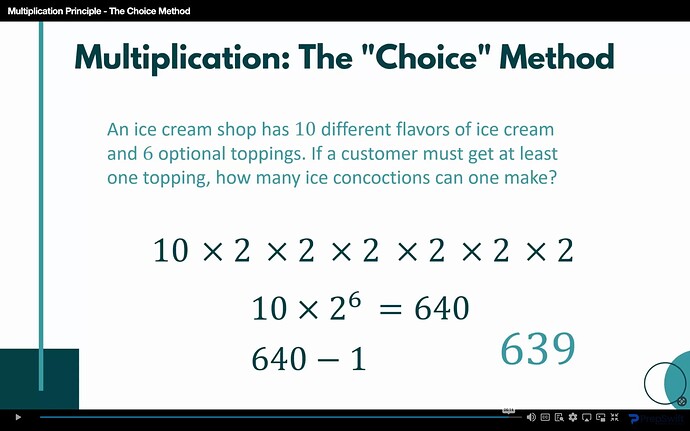Hey guys, I hope you are all having a delightful week.
I was doing the “Multiplication: The Choice Method” video and had a question on the last problem in that video. The questions is as follows: An ice cream shop has 10 different flavors of ice cream and 6 additional toppings. If a customer must get at least one topping, how many ice concoctions can one make?
Greg answers the question as (10 * 2 * 2 * 2 * 2 * 2 * 2) - 1 = 639.
My thinking was that if you have 10 flavors, and 6 toppings, where you have to choose at least one, it would be 10 flavors * 6 choices * yes/no * yes/no * yes/no * yes/no * yes/no * yes/no (so 5 yes/no choices after the first topping choice), for an answer of 1920 (10*6*2*2*2*2*2). This clearly, is wrong. Would you be able to explain why? Intuitively, I feel my answer makes sense. I have attached a screen shot of the question for reference.
.
